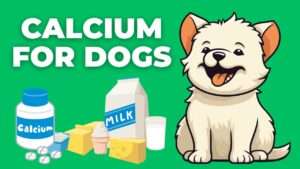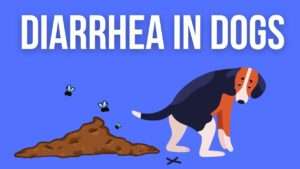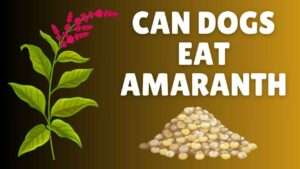Are you a pet parent wondering if it’s safe to share your delicious scallops with your furry friend? Or perhaps you’ve caught your dog eyeing your seafood dinner, and you’re curious about whether it’s okay to indulge them. In this comprehensive guide, we’ll delve into the topic of whether dogs can eat scallops, exploring the potential benefits and risks, and providing expert advice to ensure the health and well-being of your canine companion.
Contents Overview
What is Scallops
Scallops are a type of shellfish known for their sweet and delicate flavor. They have a round, fan-shaped shell and a tender, white flesh that is often enjoyed in seafood dishes. Scallops are commonly found in oceans around the world and are prized for their culinary versatility, being served grilled, sautéed, or raw in dishes like ceviche. They are a popular choice among seafood enthusiasts for their unique taste and texture.
Nutritional Value of Scallops
Scallops are not only delicious but also pack a nutritional punch. They are low in calories and fat but high in protein, making them a healthy choice for both humans and dogs. Additionally, scallops are a good source of essential nutrients such as omega-3 fatty acids, vitamin B12, zinc, and selenium. These nutrients support various bodily functions, including heart health, immune function, and skin and coat health. Incorporating scallops into your diet can help you meet your nutritional needs while enjoying a tasty seafood treat.
Can Dogs Eat Scallops Safely?
Yes, dogs can eat scallops safely, but it’s important to exercise caution and moderation. Scallops provide a protein-rich snack for dogs, supporting muscle growth and repair. They also contain omega-3 fatty acids, which promote healthy skin and coat. However, potential risks include allergic reactions, as some dogs may be sensitive to shellfish. Additionally, scallops may have a high sodium content, which can be harmful to dogs if consumed in excess. To ensure safety, offer plain, cooked scallops in small portions and monitor your dog for any adverse reactions. Consulting with a veterinarian before introducing scallops into your dog’s diet is advisable, especially if your dog has any existing health conditions or dietary restrictions.
Potential Benefits of Scallops to Dogs
Feeding your dog scallops in moderation can offer several health benefits:
- Healthy Skin and Coat:
- Omega-3 fatty acids in scallops contribute to a shiny coat and healthy skin, reducing itching and dryness.
- Improved Joint Health:
- The presence of omega-3 fatty acids helps reduce inflammation, potentially alleviating joint pain and stiffness, particularly beneficial for senior dogs or those with arthritis.
- Enhanced Muscle Development:
- Scallops are an excellent source of lean protein, aiding in muscle growth and repair, crucial for active and growing dogs.
- Boosted Immune System:
- Zinc and vitamin B12 support a robust immune system, helping your dog fight off infections and illnesses.
- Better Digestive Health:
- The high-quality protein in scallops is easily digestible, promoting gastrointestinal health and nutrient absorption.
Potential Risks and Precautions of Feeding Scallops to Dogs
Understanding these risks can help you make informed decisions to ensure your dog’s health and well-being. Let’s explore the potential hazards and precautions associated with feeding scallops to dogs.
- Allergic Reactions:
- Risk: Dogs, like humans, can develop allergies to certain foods, including seafood. Introducing scallops to your dog’s diet without prior exposure may lead to allergic reactions.
- Precaution: Monitor your dog closely for any signs of allergic reactions, such as itching, swelling, hives, vomiting, or diarrhea, after feeding them scallops. If any symptoms occur, discontinue feeding scallops and consult your veterinarian.
- Bacterial Contamination:
- Risk: Raw seafood, including scallops, can harbor bacteria such as Salmonella or Vibrio, which may cause foodborne illnesses in dogs.
- Precaution: Always ensure that scallops are thoroughly cooked before serving them to your dog. Cooking helps eliminate harmful bacteria and reduces the risk of foodborne illness.
- Choking Hazard:
- Risk: Scallops may contain small bones or shell fragments that pose a choking hazard to dogs, especially if swallowed whole or inadequately chewed.
- Precaution: Remove any shells or bones from the scallops before feeding them to your dog. This reduces the risk of choking or intestinal blockages.
- Digestive Upset:
- Risk: Introducing new foods, such as scallops, into your dog’s diet too quickly or in large quantities may cause digestive upset, leading to symptoms like vomiting, diarrhea, or gastrointestinal discomfort.
- Precaution: Introduce scallops gradually and in small amounts, observing your dog’s reaction. If digestive issues arise, reduce the amount or frequency of scallops and consult your veterinarian if problems persist.
- High Sodium Content:
- Risk: Scallops may contain a relatively high sodium content, which can be harmful to dogs, particularly those with underlying health conditions like hypertension or heart disease.
- Precaution: Limit the amount of salt or seasoning added during cooking, and avoid feeding your dog overly salty or seasoned scallops. Opt for plain, cooked scallops as a safer alternative.
Safe Ways to Feed Scallops to Dogs
While scallops can be a tasty and nutritious addition to your dog’s diet, it’s essential to follow safe practices when feeding them to your furry friend. By taking the right precautions, you can ensure that your dog enjoys the benefits of scallops without encountering any health risks. Let’s explore some safe ways to feed scallops to dogs.
- Cook Thoroughly:
- Method: Cook scallops thoroughly until they are fully cooked and opaque throughout.
- Reason: Cooking eliminates harmful bacteria and reduces the risk of foodborne illnesses, ensuring the safety of your dog.
- Remove Shells and Bones:
- Method: Before serving, remove any shells or bones from the scallops.
- Reason: Shells and bones can pose a choking hazard or cause intestinal blockages if ingested by your dog.
- Serve Plain and Unseasoned:
- Method: Avoid seasoning or adding any spices to the scallops when cooking.
- Reason: Seasonings and spices may contain ingredients that are harmful to dogs, such as garlic, onion, or excessive salt.
- Introduce Gradually:
- Method: Introduce scallops to your dog’s diet gradually, starting with small amounts.
- Reason: Gradual introduction allows your dog’s digestive system to adjust to the new food, reducing the risk of digestive upset.
- Monitor for Allergic Reactions:
- Method: Watch for any signs of allergic reactions after feeding scallops to your dog.
- Signs: Symptoms of allergic reactions may include itching, swelling, hives, vomiting, or diarrhea.
- Action: If any allergic reactions occur, discontinue feeding scallops and consult your veterinarian.
- Control Portion Sizes:
- Method: Control the portion sizes of scallops based on your dog’s size, weight, and dietary needs.
- Reason: Feeding appropriate portion sizes prevents overeating and ensures balanced nutrition for your dog.
- Treat Occasionally:
- Method: Offer scallops to your dog as an occasional treat rather than a staple food.
- Reason: While scallops can provide nutritional benefits, they should be part of a balanced diet that includes other sources of protein and nutrients.
- Consult with Your Veterinarian:
- Method: Consult with your veterinarian before introducing scallops or any new food to your dog’s diet.
- Reason: Your veterinarian can provide personalized recommendations based on your dog’s health status, dietary needs, and any existing medical conditions.
When to Avoid Scallops to Dog
- Allergic Reactions: If your dog has a known seafood allergy or has shown allergic reactions to other types of seafood.
- Digestive Issues: When your dog has a sensitive stomach or is prone to digestive upset, such as vomiting or diarrhea.
- Underlying Health Conditions: If your dog has pre-existing health conditions like pancreatitis, kidney disease, or gastrointestinal issues.
- Medication Interactions: If your dog is taking medications that may interact with seafood or its components.
- During Training or Performance Events: Avoid feeding scallops before training sessions or performance events to prevent potential gastrointestinal discomfort or distraction.
- As a Regular Substitute: Scallops should not replace balanced commercial dog food as the primary source of nutrition.
- Pregnancy or Lactation: Extra caution should be taken when feeding new foods to pregnant or lactating dogs, as it can affect the health of the mother and her puppies.
Safe and Suitable Alternatives of Scallops for Dogs
If you’re looking for safe and suitable alternatives to scallops for your dog, consider options like cooked fish (such as salmon or white fish), lean cooked chicken or turkey, boiled eggs, or plain cooked shrimp. These alternatives provide similar nutritional benefits, including protein and essential nutrients, while minimizing the risk of allergic reactions or digestive issues. Always ensure that any alternative foods are cooked thoroughly, free from seasoning or additives, and introduced gradually into your dog’s diet to ensure their safety and enjoyment.
Bottom Line
Incorporating scallops into your dog’s diet can provide a range of health benefits, from improved skin and coat to enhanced joint health and immune function. However, it’s crucial to offer them in moderation and cooked form, avoiding any potential risks associated with raw seafood. By adding scallops to your dog’s menu, you can treat your furry friend to a delicious and nutritious meal that contributes to their overall well-being. Always consult with your veterinarian before making any significant changes to your dog’s diet to ensure it aligns with their individual needs and health status.



































+ There are no comments
Add yours